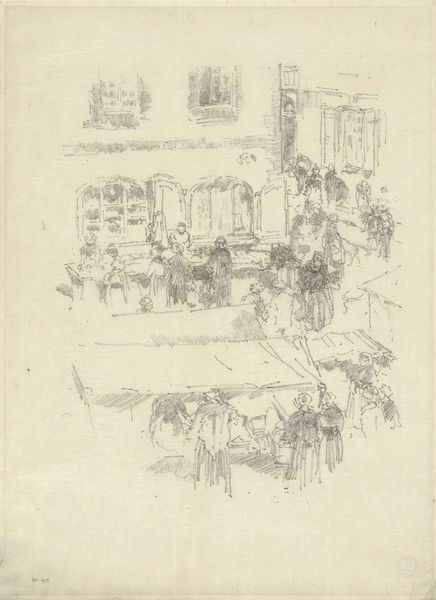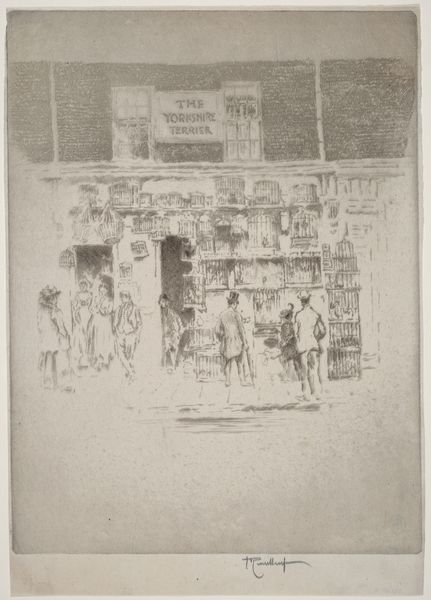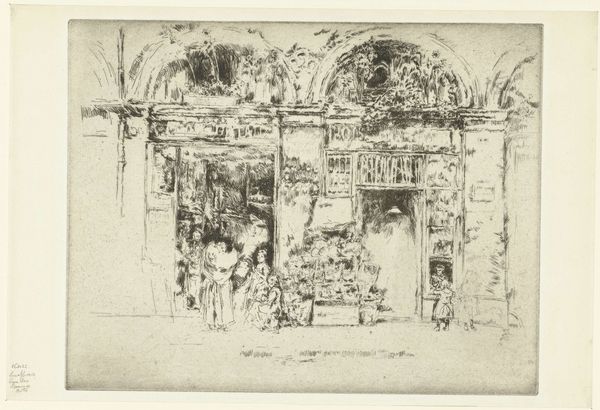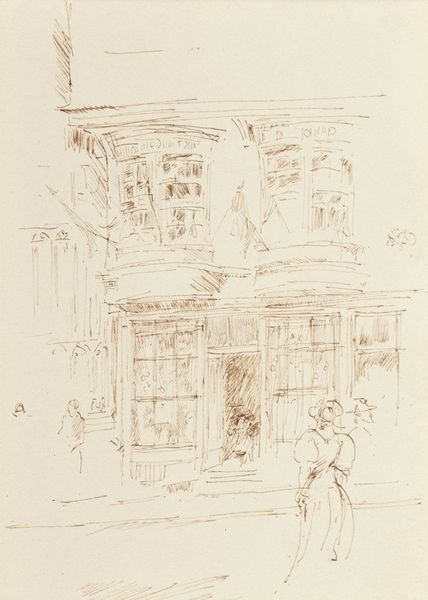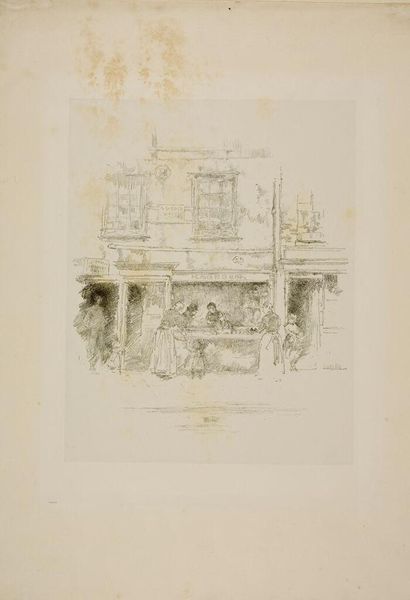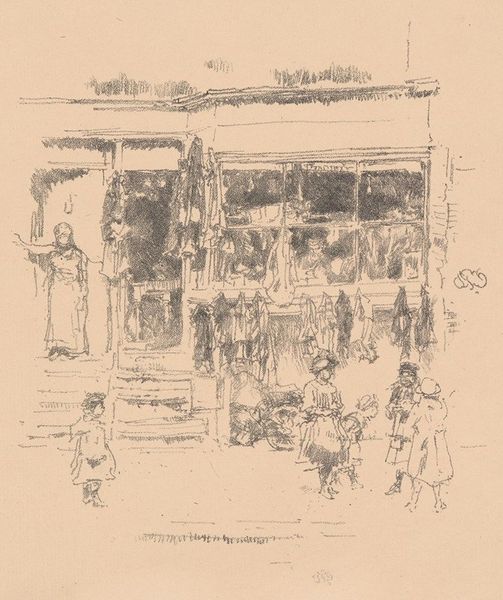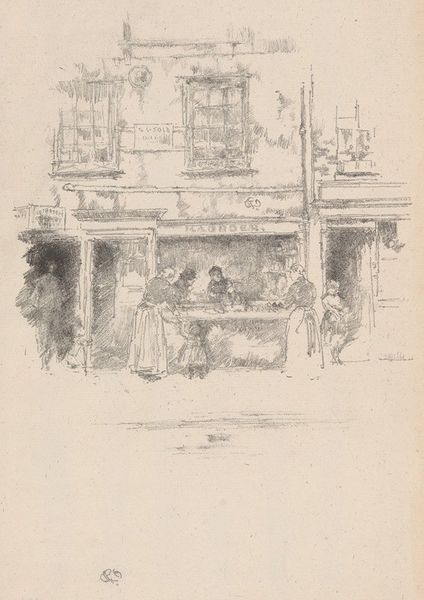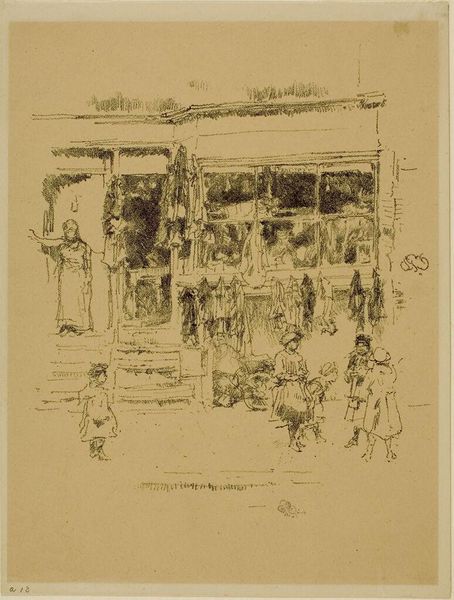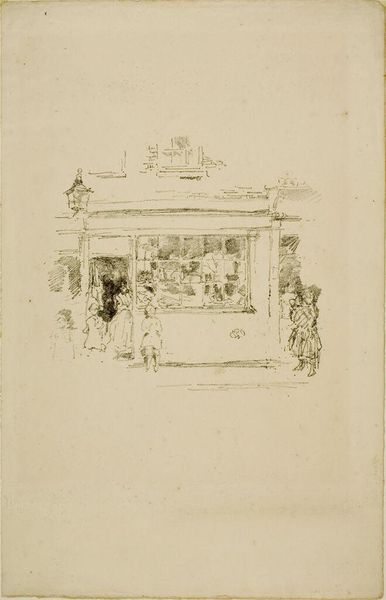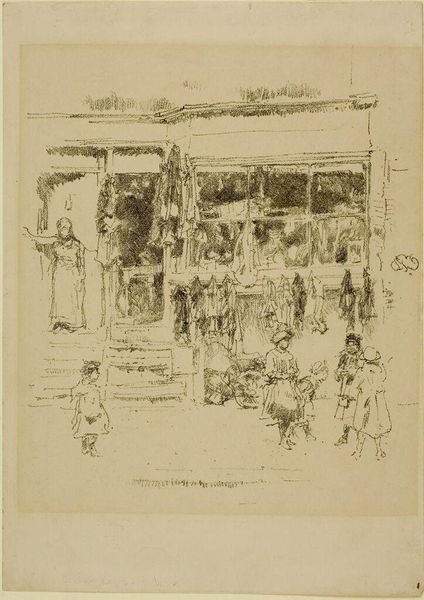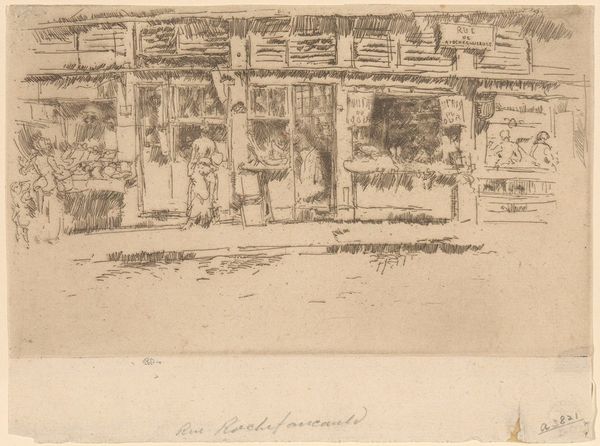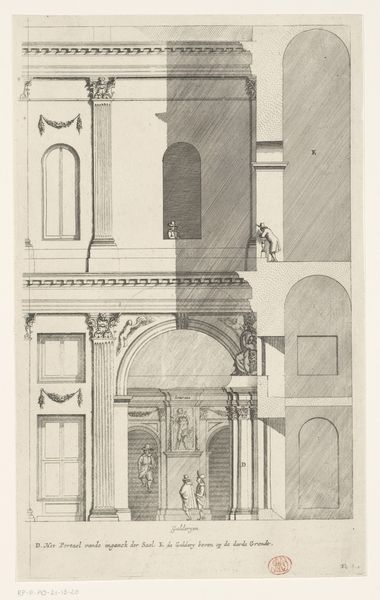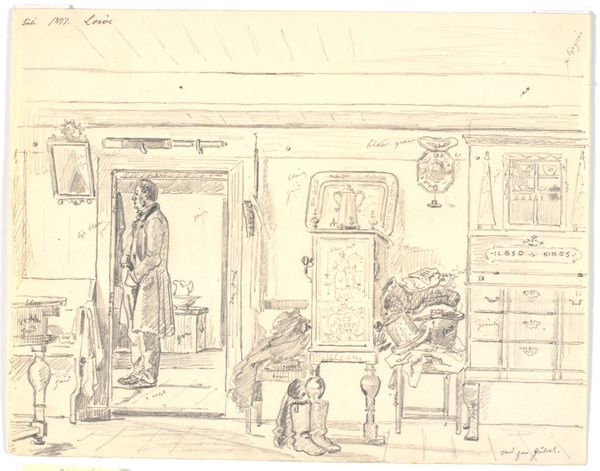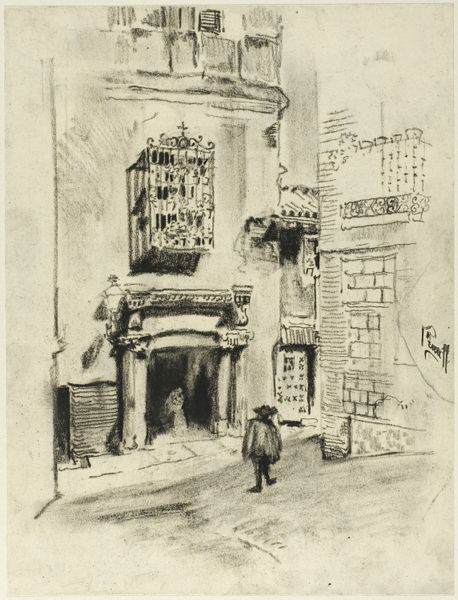
Dimensions: height 290 mm, width 201 mm
Copyright: Rijks Museum: Open Domain
Editor: Here we have James Abbott McNeill Whistler’s “The Vegetable Shop on the Rue de Grenelle in Paris” from 1894, a pencil and pen drawing. It feels like a quick, fleeting impression of a Parisian street. What visual echoes do you perceive? Curator: What resonates most powerfully for me is the interplay of absence and presence. Notice the fluid lines—how they conjure a reality that feels both tangible and ephemeral. Consider the symbols embedded within: the vegetable shop itself, an emblem of sustenance and daily ritual. What does the woman holding produce represent, set against those dogs? Editor: Perhaps a representation of everyday life, a snapshot of the ordinary? I’m drawn to the contrast between the detailed foreground and the blurrier background. Curator: Precisely! The blurring contributes to the sense of a transient moment captured, reflecting the influence of Impressionism. But beyond the surface, consider the cultural weight of such a scene. What stories do these shops and streets whisper of Parisian society at the close of the 19th century? Is there an implied commentary about labor or consumer culture suggested through this imagery? What is Whistler trying to say about society through something seemingly as simple as a sketch of a vegetable shop? Editor: I hadn’t considered that deeper symbolic meaning! It makes me think about the cultural significance of food and how it represents the lifeblood of a city. Thank you; I will be looking for embedded visual cues from now on. Curator: And I, at the stories a simple street can hold. We bring our unique filters, shaped by our cultural moments. The power of symbols persists across time, and invites new eyes.
Comments
No comments
Be the first to comment and join the conversation on the ultimate creative platform.
